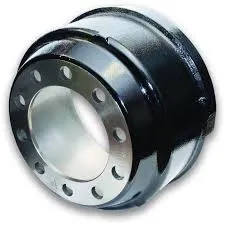
-
 Afrikaans
Afrikaans -
 Albanian
Albanian -
 Amharic
Amharic -
 Arabic
Arabic -
 Armenian
Armenian -
 Azerbaijani
Azerbaijani -
 Basque
Basque -
 Belarusian
Belarusian -
 Bengali
Bengali -
 Bosnian
Bosnian -
 Bulgarian
Bulgarian -
 Catalan
Catalan -
 Cebuano
Cebuano -
 Corsican
Corsican -
 Croatian
Croatian -
 Czech
Czech -
 Danish
Danish -
 Dutch
Dutch -
 English
English -
 Esperanto
Esperanto -
 Estonian
Estonian -
 Finnish
Finnish -
 French
French -
 Frisian
Frisian -
 Galician
Galician -
 Georgian
Georgian -
 German
German -
 Greek
Greek -
 Gujarati
Gujarati -
 Haitian Creole
Haitian Creole -
 hausa
hausa -
 hawaiian
hawaiian -
 Hebrew
Hebrew -
 Hindi
Hindi -
 Miao
Miao -
 Hungarian
Hungarian -
 Icelandic
Icelandic -
 igbo
igbo -
 Indonesian
Indonesian -
 irish
irish -
 Italian
Italian -
 Japanese
Japanese -
 Javanese
Javanese -
 Kannada
Kannada -
 kazakh
kazakh -
 Khmer
Khmer -
 Rwandese
Rwandese -
 Korean
Korean -
 Kurdish
Kurdish -
 Kyrgyz
Kyrgyz -
 Lao
Lao -
 Latin
Latin -
 Latvian
Latvian -
 Lithuanian
Lithuanian -
 Luxembourgish
Luxembourgish -
 Macedonian
Macedonian -
 Malgashi
Malgashi -
 Malay
Malay -
 Malayalam
Malayalam -
 Maltese
Maltese -
 Maori
Maori -
 Marathi
Marathi -
 Mongolian
Mongolian -
 Myanmar
Myanmar -
 Nepali
Nepali -
 Norwegian
Norwegian -
 Norwegian
Norwegian -
 Occitan
Occitan -
 Pashto
Pashto -
 Persian
Persian -
 Polish
Polish -
 Portuguese
Portuguese -
 Punjabi
Punjabi -
 Romanian
Romanian -
 Russian
Russian -
 Samoan
Samoan -
 Scottish Gaelic
Scottish Gaelic -
 Serbian
Serbian -
 Sesotho
Sesotho -
 Shona
Shona -
 Sindhi
Sindhi -
 Sinhala
Sinhala -
 Slovak
Slovak -
 Slovenian
Slovenian -
 Somali
Somali -
 Spanish
Spanish -
 Sundanese
Sundanese -
 Swahili
Swahili -
 Swedish
Swedish -
 Tagalog
Tagalog -
 Tajik
Tajik -
 Tamil
Tamil -
 Tatar
Tatar -
 Telugu
Telugu -
 Thai
Thai -
 Turkish
Turkish -
 Turkmen
Turkmen -
 Ukrainian
Ukrainian -
 Urdu
Urdu -
 Uighur
Uighur -
 Uzbek
Uzbek -
 Vietnamese
Vietnamese -
 Welsh
Welsh -
 Bantu
Bantu -
 Yiddish
Yiddish -
 Yoruba
Yoruba -
 Zulu
Zulu
brake drum diameter measurement
Understanding Brake Drum Diameter Measurement
Brake drums play a vital role in the braking system of vehicles, and accurate measurement of their diameter is crucial for ensuring optimal performance and safety. The brake drum is a cylindrical component that houses the brake shoes on the rear wheels of a vehicle. When the brakes are applied, the shoes expand against the inner surface of the drum, creating friction that slows down or stops the vehicle. Therefore, the diameter of the brake drum can significantly influence the braking efficiency.
Understanding Brake Drum Diameter Measurement
Once the drum is accessible, the next step is to take a direct measurement of the interior diameter. It is essential to measure at multiple points around the circumference to account for potential wear or warping that may have occurred over time. Ideally, the measurement should be taken at the center of the drum’s inner surface, as this is where the brake shoes make contact.
brake drum diameter measurement

Wear and tear can lead to an increase in the drum diameter, commonly referred to as “drum coning.” This phenomenon can result in uneven brake pad contact, which not only reduces braking efficiency but can also lead to dangerous situations. Thus, if the diameter exceeds the manufacturer's specifications, the drum may need to be resurfaced or replaced.
In addition to ensuring proper measurements, it's crucial to regularly inspect brake drums for any signs of damage or excessive wear. Cracks, deep grooves, or discoloration can indicate overheating or structural failure, which can compromise safety. Regular maintenance checks should include verifying the brake drum diameter to ensure that vehicle operations remain safe and efficient.
To summarize, the measurement of brake drum diameter is an essential aspect of vehicle maintenance that should not be overlooked. Accurate measurements ensure that braking systems function effectively, thereby enhancing vehicle safety. Regular inspections and adherence to manufacturer specifications can help maintain optimal performance and extend the lifespan of brake components. This simple yet crucial measurement process can make all the difference in ensuring safety on the road.
-
Safety Features of Red Brake DrumsNewsAug.01,2025
-
Rear Drum Brakes Replacement for Older VehiclesNewsAug.01,2025
-
Professional Brake Drum Turning Services ExplainedNewsAug.01,2025
-
How Brake Drum and Rotor Puller WorksNewsAug.01,2025
-
Brakes and Drums CompatibilityNewsAug.01,2025
-
Anticipate Failures in Brake Drum MotorNewsAug.01,2025
-
What Are Drum BrakesNewsJul.07,2025
